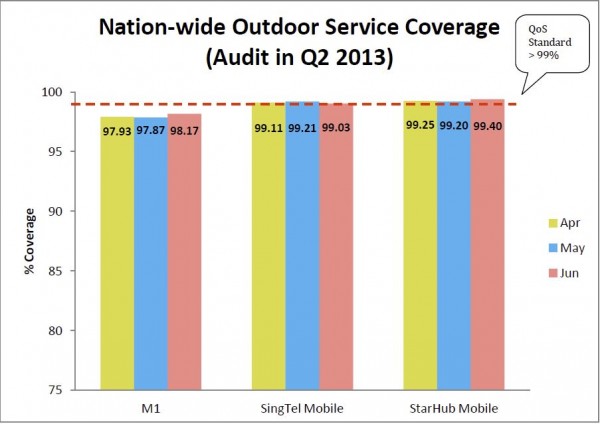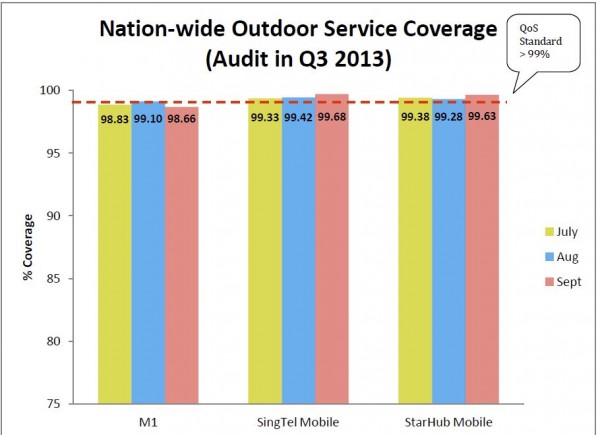
M1 has been given a S$25,000 fine for once again failing to provide adequate cellphone coverage in Singapore, while rivals SingTel and StarHub passed the tests conducted by the government regulator in the second and third quarter last year.
In the second quarter, the smallest operator here reached about 98 per cent of places such as housing estates, outdoor recreation centres and train routes above ground, which made it the poorest performer among the three operators. It also failed to reach the 99 per cent required.
Though it improved in the third quarter, passing the mark in one of the three months, it still failed in the other two months, and clearly trailed its bigger rivals in the test results released today by the Infocomm Development Authority (IDA).

On a positive note, all three operators improved from 2012, when the first tests were carried out. Then, they had all failed to meet the 99 per cent mark for outdoor coverage and drew a S$10,000 fine each from the regulator.
But while SingTel and StarHub users will be happy that the two operators got all the ticks this time, M1 subscribers may start asking why the “orange” operator is once again the worst performer.
It also fell behind the competition in indoor tests.
In 60 buildings surveyed, it provided the required 85 per cent coverage in only 41 buildings in the second quarter and in 46 buildings in the third quarter. This compared against 50 or more buildings passed for its rivals.
The good news is that all three operators passed a number of other tests, such as in existing road and MRT tunnels. Here, they all offered better than 95 per cent coverage.
What should consumers make of this? Clearly, the pressure of being publicly embarrassed and having customers shift to the competition has forced operators to up their game in terms of coverage.
In giving M1 a slap on the wrist today with a relatively minor fine, the IDA also noted that it had been improving its coverage. If it continues improving, it could well pass the tests when the results are next released in the coming months.
This has only come after much unhappiness with the service provided by operators of late. They have not been helped either by high-profile disruptions that caused consumers much inconvenience in the past year.
To be fair to the operators, they have also been investing in new network equipment to enhance the mobile experience. SingTel, the most optimistic of the lot, even went so far as to promise speed boosts of 20 per cent at crowded places last month.
The IDA should test such claims in future. Besides coverage, go measure how fast a user can connect to the Internet on their smartphones. It’s a major bugbear for many users who can see a full-strength signal on their phone but still get nowhere online.
To see the full report from IDA, go to its website. The standards expected are spelt out here.







Where are the test sites? Try it on a MRT from Clementi to Jurong East. You will not probably not get any data reception (5 bars).